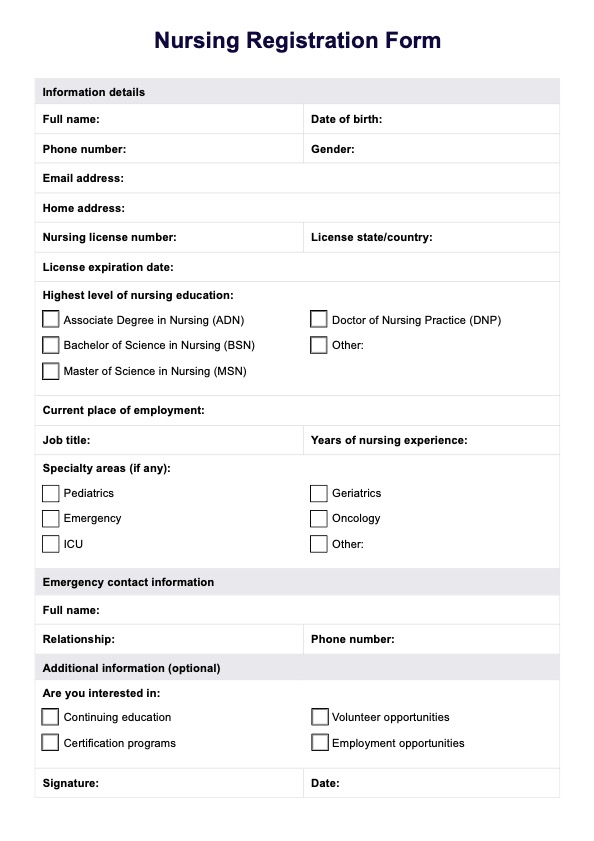Yes. Completing a recognized nursing school program is a prerequisite for meeting most licensing requirements and registering with a nurse licensing authority.

Nursing Registration Form
Download our Nursing Registration Form template to streamline licensing requirements for nursing school graduates and early-career professionals.
Use Template
Nursing Registration Form Template
Commonly asked questions
Applicants must provide details about their active license, including license number, issuing state or region, expiration date, and any disciplinary actions, in accordance with jurisdiction-specific licensing requirements.
Absolutely. The form accommodates nurses with 0–1 years or even up to 2 years of experience, making it suitable for both recent graduates and early-career professionals preparing for licensure or employment.
EHR and practice management software
Get started for free
*No credit card required
Free
$0/usd
Unlimited clients
Telehealth
1GB of storage
Client portal text
Automated billing and online payments











